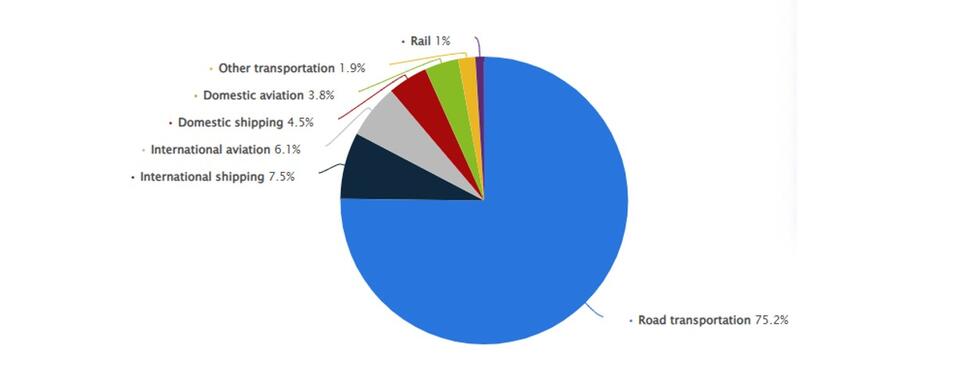Fleet electrification playbook – Part 1: Five reasons fleet electrification is still the right move for your business

By Hanna Dancey, Associate Project Manager, Transportation Electrification
In this four-part series on fleet electrification, Trio’s team of experts will walk you through understanding the benefits of the electric vehicle (EV) transition, getting started with electrification, developing a strategy, and piloting projects. Regardless of where your organization is in the electrification journey, this series will provide useful insights at every step.
Transitioning your organizational fleet remains a sound strategy, even with the changing regulatory environment in the U.S. Fleet electrification is one of many ways suppliers can differentiate themselves, and it is a worthwhile investment that can help your business meet its emissions reduction targets.
Strategizing early in the fleet electrification journey will put your company in the best strategic position moving forward. In this first article of the series, we explore some of the reasons why businesses should consider electrifying their fleets.
1) EVs help companies save money
An EV’s total cost of ownership (TCO)—which includes all the upfront costs of procuring an EV and the combined operational costs—has proven to be lower than the cost of a similar internal combustion engine (ICE) vehicle. Most of these savings occur due to lower fueling costs (electricity vs. diesel or gasoline) and reduced maintenance expenses over the vehicle’s lifetime. For example, for delivery vans operating in the U.S., powering an EV is 68% less expensive on average than fueling an ICE van. These fuel savings can even offset the upfront costs of installing chargers within a period of four to nine years.
Additionally, light-duty commercial EVs are approaching price parity. The 2025 Ford eTransit, for instance, is only 8% more expensive than the 2025 Ford Transit before applying any incentives. Across the country, state and utility incentives are increasing to support the transition and encourage EV adoption. Integrating electric vehicles and electric handling equipment into your fleet presents a key opportunity for cost savings, making fleet electrification a strategic business decision.
2) Regulations are still driving EV adoption at the state level and beyond
California, along with multiple other states, is still forging ahead with state-level ICE phase-out regulations for automakers, covering light, medium- and heavy-duty vehicles. This means fewer ICE vehicles will be available for purchase as EV production ramps up over the next two decades. Across the Atlantic, the European Union is moving forward with its goal of achieving 100% zero-emission vehicle (ZEV) sales by 2035 and is exploring a proposal to require new corporate fleets to transition to 100% ZEVs by 2030. If your organization operates across multiple states and continents, it is likely that you will need to comply with various regulations regarding the electric transition.
3) Organizations need to continue to meet their internal emissions reduction targets
Transitioning to electric vehicles is one of the most effective decarbonization levers for reducing your Scope 1 emissions. Scope 1 emissions result from the combustion of fossil fuels on-site. In the U.S., switching to EVs can reduce those emissions by over 90%. Globally,transportation is the second-largest source of greenhouse gas emissions, and road vehicles are the largest contributor within the transportation sector. Addressing this emission source could put a significant dent in your emissions and make meaningful progress towards broader emissions reduction targets.

4) You are your customers’ Scope 3 emissions
Your customers may require you to take steps on your decarbonization journey so they can lower their own Scope 3 emissions. Scope 3 emissions often represent the largest share of a company’s emissions. In 2023, they were 26 times greater on average than Scope 1 and 2 emissions combined. To address this, customers may prioritize vendors and suppliers based on their sustainability commitments and actions in order to pursue supply chain resilience, align with companies that share their values, and achieve their own goals. To keep up with evolving expectations and preferences, businesses that proactively pursue decarbonization targets and initiatives can gain a competitive advantage.
5) The transition takes time
It could take your organization two years (or more!) to deploy electric vehicles, from initial strategy to execution. Typically, developing a deployment strategy can take up to six months, while it can take up to 21 months to design charger installations, obtain permits, coordinate with the utility to bring power to your project, and complete construction. If your company begins developing a strategy in 2025, it may not be until 2027 or 2028 that your fleet has EVs charging on site and integrated into your overall operations. Being proactive with a strategy and having a comprehensive fleet electrification roadmap enables a seamless and well-planned deployment while safeguarding against evolving external factors.
Upcoming posts in this series will break down the next steps to kick off your fleet electrification journey, all the way through pilot site deployment and testing. In the next post, Trio’s team will guide you through data collection and baselining, building a business case, and securing buy-in from key stakeholders.
If you would like to get started with fleet electrification, please reach out to our team of experts.
Subscribe to Trio to stay on top of the latest fleet electrification news and insights.
